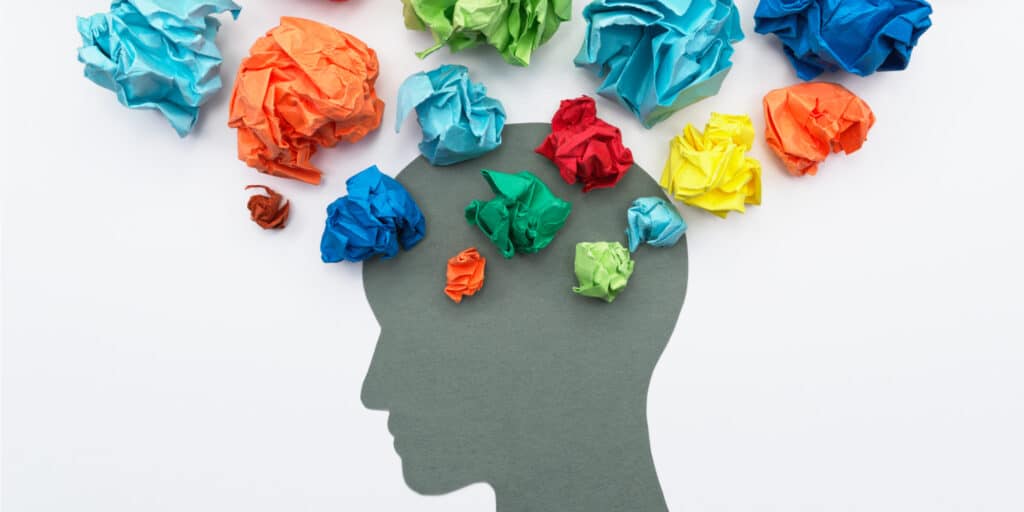The month of May is observed as National Mental Health Awareness Month. During that time falls Mental Health Awareness Week, which is celebrated from May 9 through 15. While it may seem redundant to have an awareness week smack in the middle of an awareness month, Mental Health Awareness Week is an opportunity to raise awareness of specific issues surrounding mental health and to advocate for change.
To help raise awareness about mental health, we’re highlighting this year’s Mental Health Awareness Week theme by teaching you how to spot the signs of mental illness.
What Is Mental Health Awareness Week?
First founded 21 years ago by the Mental Health Foundation, Mental Health Awareness Week is a time to celebrate, raise awareness, and educate others on the importance of mental health. Each year, the Mental Health Foundation chooses a different theme, which can include anything from nature and mental health to the importance of practicing kindness and body positivity.
This year, the theme of Mental Health Awareness Week is loneliness. The Mental Health Foundation says, “One in four adults feel lonely some or all of the time. There’s no single cause and there’s no one solution. After all, we’re all different! But, the longer we feel lonely, the more we are at risk of mental health problems. Some people are also at higher risk of feeling lonely than others.”
For this year’s Mental Health Awareness Week, the emphasis on loneliness is meant to raise awareness about the impact this common feeling can have on our mental health and the practical steps that we can all take to address it.
According to the Mental Health Foundation’s Chief Executive, Mark Rowland, “Loneliness deserves more attention and we’re calling on everyone who has struggled as a result of being lonely to share their experiences. We must work together as individuals, as a society, and through government, policy-to reduce loneliness and prevent mental health problems by investing in welcoming social spaces and new community initiatives.”
Since loneliness is one of the most common feelings associated with the onset of mental illness, it’s only fitting that for this year’s Mental Health Awareness Week, we’d share a few easy tips on how you can spot the signs of declining mental health, and what you can do when that happens.
First, let’s cover what some of the most common mental illnesses are, and what symptoms they typically cause.
What Are the Most Common Mental Illnesses?

In the United States, there are many mental health conditions that affect millions of people each year. The National Alliance on Mental Illness (NAMI) reports that about one in five adults in the U.S. will experience a mental illness at some point in their lifetime. Additionally, NAMI reports that at any given time, there are 10 million Americans living with a serious mental disorder.
While there are, as previously mentioned, numerous mental health disorders, the most common are anxiety disorders, major depressive disorder, and bipolar disorder. Together, these three mental illnesses affect nearly 60 million people each year.
Below is more information on these three common mental health disorders.
Anxiety Disorders
Anxiety disorders are the most common type of mental illness in the U.S., affecting more than 40 million adults age 18 and older, or about 18 percent of the population every year. Along with being incredibly common, anxiety disorders are also highly treatable; yet, only about 35 percent of those living with one receive treatment.
According to the Anxiety and Depression Association of America (ADAA), people with an anxiety disorder are three to five times more likely to go to the doctor and are almost six times as likely to be hospitalized for psychiatric disorders than those without anxiety disorders.
It is not uncommon for someone with an anxiety disorder o also suffer from depression or vice versa. Nearly 50 percent of those diagnosed with depression are also diagnosed with anxiety disorder.
Major Depressive Disorder
Major depressive disorder is the leading cause of disability among Americans aged 15 to 44 and affects nearly 16.1 million people, or about 6.7 percent of the population each year. While this condition can develop at any age, according to the ADAA, the median age at onset is 32.5 years old. The organization also reports that major depressive disorder is also more prevalent in women than in men.
Bipolar Disorder
Bipolar disorder affects about 2.3 million Americans every year and appears to occur in men and women equally. While this condition can occur at any age, it is most commonly diagnosed earlier in life, around 25 years of age.
People who suffer from bipolar disorder typically experience manic episodes which cause their moods and behaviors to become drastically different than normal. These changes can include things like unusual energy, activity, or sleeping patterns.
Next, we’ll take a closer look at how you can spot the signs of these three common mental health disorders, and what you can do when they arise.
Mental Health Awareness Week: How to Spot the Signs of Mental Illness

Mental illnesses like anxiety, depression, and bipolar disorder rarely appear “out of the blue.” Rather, they often occur gradually over time, with most people experiencing small changes in their behaviors or feelings before an illness appears in its full-fledged form.
An important aspect of Mental Health Awareness Week is understanding these small changes or early warning signs. This can help you take action early and get help before an illness becomes severe. Early treatment of mental illness can help reduce the severity of an illness, and may even make it possible to delay or prevent a major mental illness altogether.
Below, we’ll cover the early warning signs of the three most common mental illnesses, starting with the most common: anxiety disorders.
Signs of Anxiety Disorders
Experiencing occasional anxiety is common and a normal part of life. However, people with an anxiety disorder have frequent, intense episodes of worry and fear about otherwise mundane, everyday experiences.
While there are several different types of anxiety disorders, they all involve repeated episodes of sudden feelings of intense anxiety and fear or terror that reach a peak within minutes (panic attacks).
Common warning signs of an anxiety disorder include:
- Difficulty sleeping or irregular sleep schedule
- Lack of concentration
- Being easily irritated
- Feeling constantly tired
- Intense and prolonged feelings of fear or worry
- Rapid heart rate
Signs of Major Depressive Disorder
Like the occasional bout with anxiety, the occasional feeling of intense sadness is a completely normal part of life. However, when these feelings of sadness last for longer than normal, or if they impact your ability to carry out basic activities, it may be a sign that you are suffering from a major depressive disorder.
Common early warning signs of major depressive disorder to look out for include:
- Unexplained feelings of aches and pain, most commonly in the joints
- Inability to concentrate
- Too much or too little sleep
- Changes in appetite
- Moodiness and irritability
- Feelings of intense sadness or worthlessness
Signs of Bipolar Disorder
Since bipolar disorder causes periods of intense mood swings, also known as manic episodes, the symptoms associated with this mental disorder often overlap with other common illnesses like major depressive disorder or anxiety. However, it is this overall pattern of fluctuation between manic and depressive episodes that defines bipolar disorder.
Common early warning signs of bipolar disorder include:
- Repeated episodes of major depression
- Overeating and sleeping too much when you are depressed
- Mood and energy levels higher than most people – when you’re not depressed
- While depressed, losing contact with reality
- Easy tearfulness, frequent sadness
- Confusion and inattention
What to Do When Your Mental Health Declines
The first thing you should do when you notice your mental health declining is to understand you are not alone, and that help is available. Millions of people are diagnosed with a mental health disorder every year, and with that, millions more recover or receive treatment for one as well.
Treatment for mental illness typically starts with seeing a therapist or licensed mental health care professional. They can help you work through the underlying causes of your mental illness, and teach you new ways to cope with your symptoms.
If therapy isn’t enough, or if you find yourself needing more attentive care, talk with your doctor or psychiatrist about what options are available to you. They may suggest pairing therapy with medication, or they may recommend visiting a mental health care facility that can give you more round-the-clock care.
Whatever the case may be, if you notice that your mental health is taking a turn for the worse, it’s important to talk with your doctor. Your mental health is one of the most important parts of a healthy, happy lifestyle, and you should always make sure it is being taken care of.
How Are You Getting Involved During Mental Health Awareness Week?
Let us know in the comments section below!
What topics related to mental health should we cover next?
Email us your ideas at info@painresource.com, we may just feature yours in a future article!
Mental Health Awareness Week is a great time to start connecting with other people who share similar life experiences as yourself and build up your support network.


And how many of these mental health issues are brought on by people with chronic pain and chronic illness? Anybody have any good insights and case studies?
This is a FANTASTIC point! It’s something a lot of people tend to overlook.